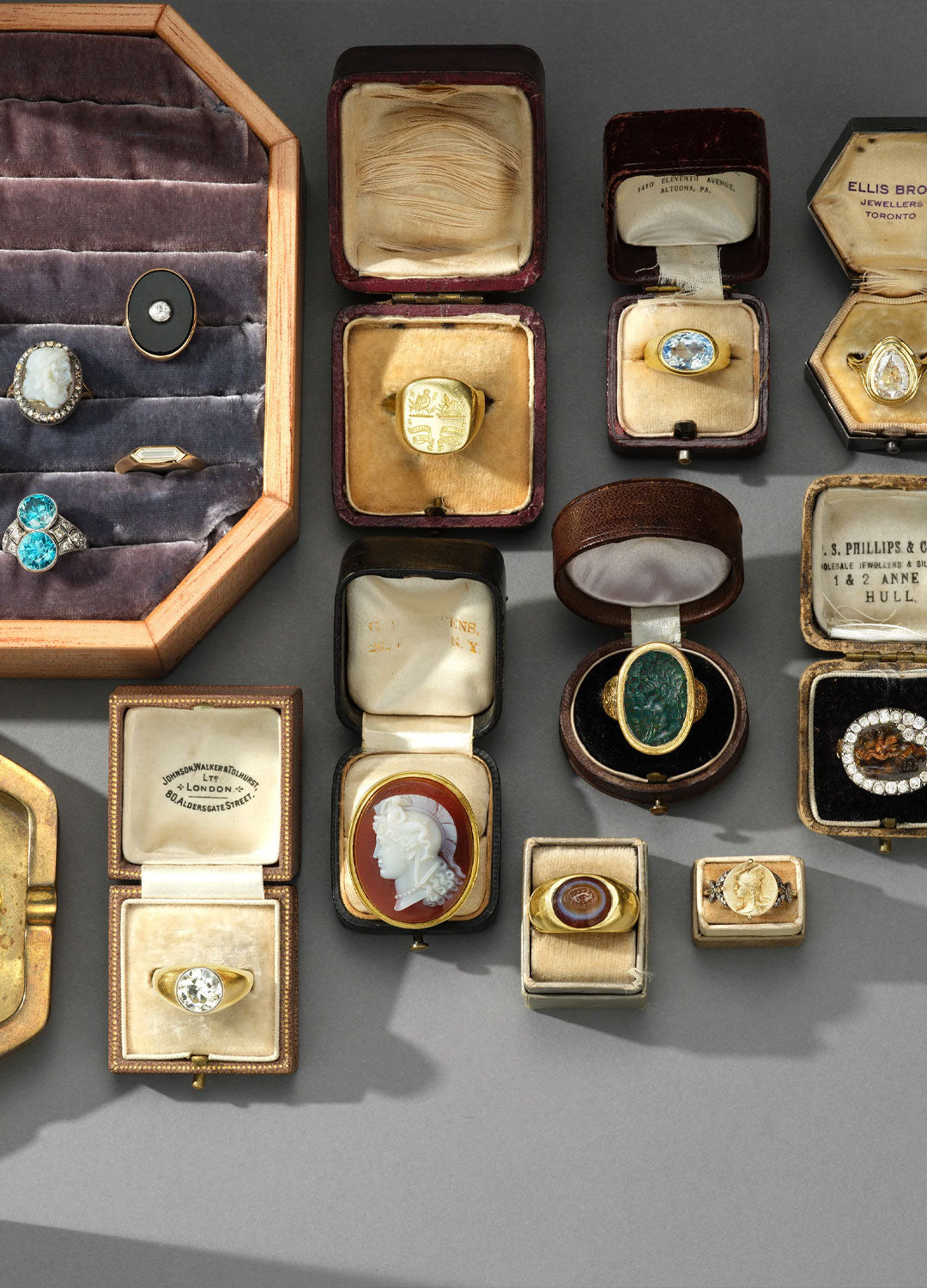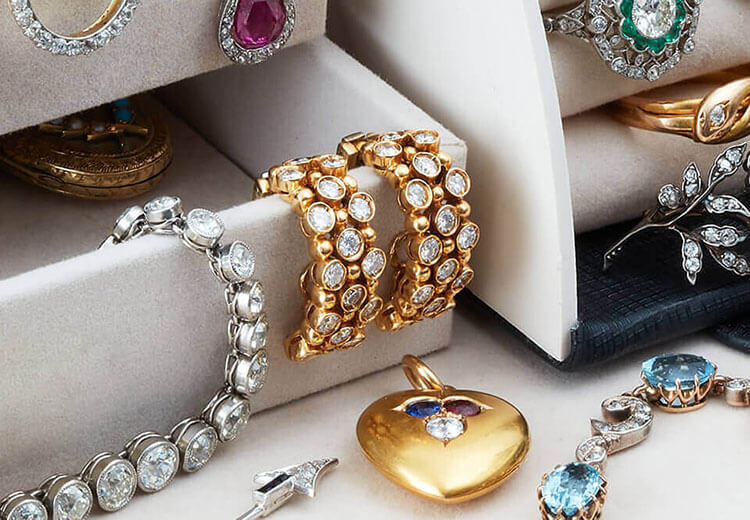Own a piece of the past with genuine antique jewelry.
Own a piece of the past with genuine antique jewelry.
Blog Article
Introducing the Attraction of Antique Fashion Jewelry: Comprehending Its Different Styles
Vintage fashion jewelry offers as a captivating window into the past, providing insights into the social and artistic subtleties of numerous ages. Each design, from the stirring complexities of Victorian precious jewelry to the fluid sophistication of Art Nouveau, encapsulates the views and developments of its time. The subsequent luxury of Edwardian layouts and the striking types of Art Deco further illustrate this advancement. As we discover these distinct styles, one have to take into consideration exactly how the value of these items goes beyond plain visual appeals, welcoming a deeper assessment of their historical and emotional resonance.
Victorian Era Precious Jewelry
The appeal of Victorian Era fashion jewelry hinges on its complex craftsmanship and extensive importance, reflecting the societal values and emotional currents of the time. Extending from 1837 to 1901, this duration was identified by a fascination with nature, grieving, and romanticism, which exceptionally influenced jewelry layout. Precious jewelry pieces frequently included elaborate themes, such as flowers, pets, and complex lattice job, crafted from materials like gold, silver, and gemstones.

Additionally, the technological advancements of the Industrial Transformation enabled more elaborate styles and using new materials, such as diamonds and pearls. This democratization of high-end made precious jewelry a lot more accessible to the middle class, leading to a spreading of diverse styles. On The Whole, Victorian Period jewelry remains a captivating testimony to the intricate interplay of art, feeling, and societal norms during a transformative historical duration.
Art Nouveau Creations
Defined by its natural forms and moving lines, Art Nouveau precious jewelry emerged in the late 19th and early 20th centuries as a response to the mass manufacturing and stiff styles of the coming before ages. This creative movement sought to embrace nature, including aspects such as flowers, leaves, and creeping plants right into the designs. Art Nouveau pieces usually featured asymmetrical compositions, highlighting a feeling of activity and fluidness.

Using cutting-edge methods, such as enameling and the unification of glass, more prominent Art Nouveau jewelry from its predecessors. The movement inevitably commemorated individuality and creative expression, making each item an unique masterpiece. Because of this, Art Nouveau creations proceed to astound enthusiasts today, embodying a distinctive blend of style and nature that continues to be ageless.
Edwardian Duration Parts
During the very early 20th century, the Edwardian period experienced a remarkable evolution in my explanation fashion jewelry layout, noted by an emphasis on beauty and opulence. This age, called after Our site King Edward VII, spanned from 1901 to 1910 and is defined by the detailed workmanship and delicate appearances that define its items.
Fashion jewelry from this duration commonly includes platinum settings, a product that enabled finer and more detailed layouts, boosting the play of light against the gems. Using rubies prevailed, usually organized in intricate concepts such as fretwork and floral patterns. Edwardian precious jewelry likewise welcomed the use of pearls, which included a soft, luminescent high quality to the items.
Breastpins, necklaces, and jewelry became popular, showcasing the age's fondness for enchanting and wayward designs. The "garland style," which included making use of ribbon-like themes, was particularly prominent, showing the naturalistic influences of the time. Furthermore, pieces frequently bundled tinted gemstones to develop striking contrasts, further boosting their aesthetic allure. Generally, Edwardian period jewelry continues to be a testament to a time when creativity and refinement reigned supreme on the planet of adornment.

Art Deco Layouts
Emerging in the 1920s and thriving via the 1930s, Art Deco develops stand for a vibrant separation from the ornate designs of previous ages, embracing geometric forms, structured types, and vivid shades. Characterized by a feeling of modernity, this layout motion attracted motivation from various sources, consisting of cubism, ancient Egyptian concepts, and the dynamic aesthetics of the equipment age.
Art Deco jewelry commonly features vibrant contrasts, combining materials such as platinum, gold, and colored gemstones to develop striking aesthetic results. Making use of intricate patterns and themes, consisting of zigzags, chevrons, and floral components, showcases the craftsmanship of the time. Notably, the era likewise saw the introduction of new strategies such as enamel work and using synthetic stones, expanding the possibilities for creative expression.
Parts from this period often emanate glamour and refinement, making them highly looked for after by enthusiasts this hyperlink and fanatics alike. Art Deco precious jewelry offers not just as a reflection of its time however also as a testimony to the long-lasting charm of its ingenious designs. It holds a substantial area in the history of antique precious jewelry, celebrated for its one-of-a-kind design and cultural importance.
Retro and Mid-Century Styles
Retro and Mid-Century styles, extending from the 1940s to the 1960s, represent a vibrant duration in precious jewelry style that reflects the optimism and innovation of post-war society. antique jewelry stores austin tx. Defined by strong layouts and using cutting-edge materials, this age saw a separation from the elaborate detailing of previous designs, welcoming instead an extra lively and exuberant aesthetic
Precious jewelry from this duration typically includes large, vivid gems, including citrine, aquamarine, and tourmaline, embeded in yellow gold-- a product that gained importance due to its cozy tones and malleability. The designs regularly incorporated whimsical concepts such as flower patterns, abstract forms, and geometric forms, capturing the spirit of modernity and liberty that specified the age.
Significant developers like Cartier and Van Cleef & Arpels made significant contributions to Retro and Mid-Century styles, creating pieces that integrated craftsmanship with imaginative panache. The influence of Hollywood glamor throughout this time led to an increased demand for statement jewelry, making it a crucial device for the stylish elite. Accumulating Retro and Mid-Century jewelry today supplies enthusiasts a look into a transformative period in history, identified by imagination and social advancement
Verdict
The expedition of antique precious jewelry reveals a vibrant spectrum of styles, each embodying the social and imaginative subtleties of its particular period. From the psychological depth of Victorian styles to the innovative spirit of Retro items, these artifacts work as crucial historic stories. Understanding the unique characteristics of each period boosts recognition for the workmanship and relevance behind these adornments, solidifying their standing as not just ornamental things however also valuable links to the past.
Report this page